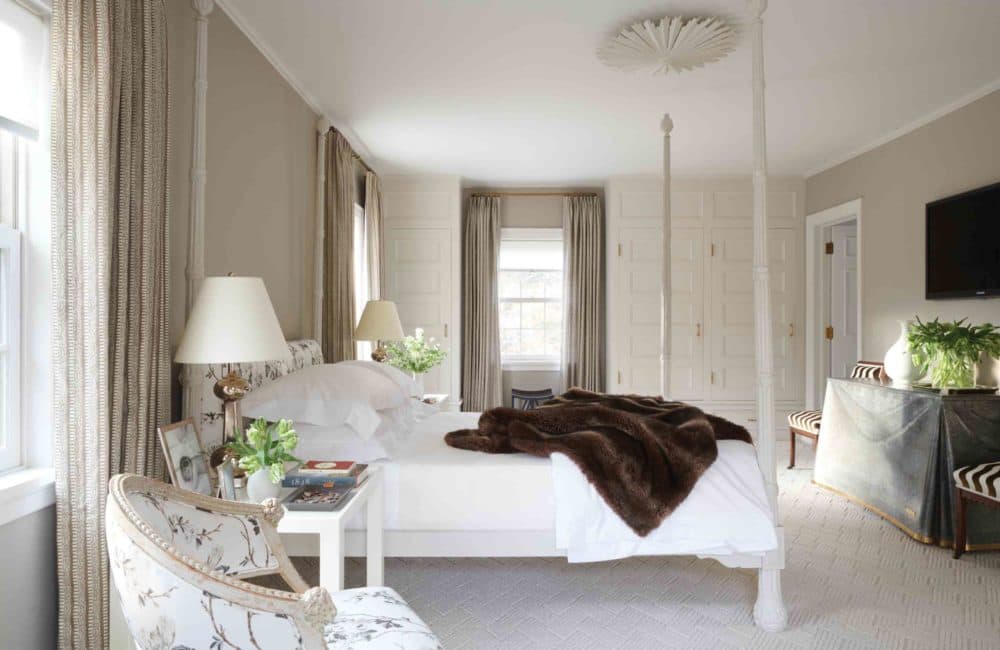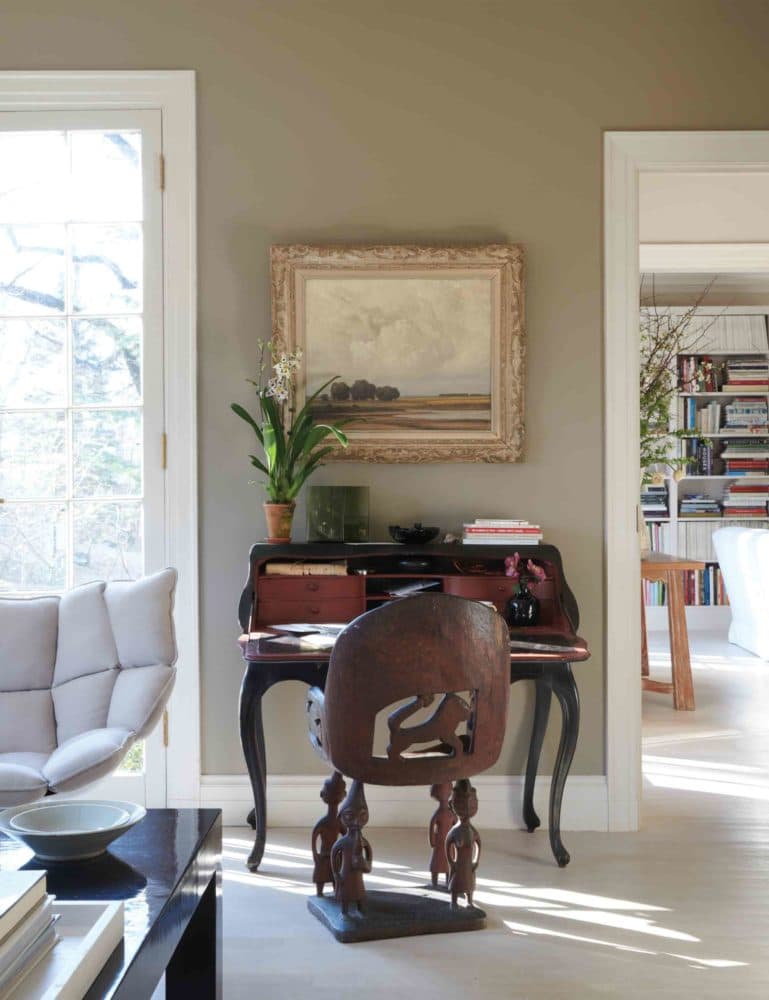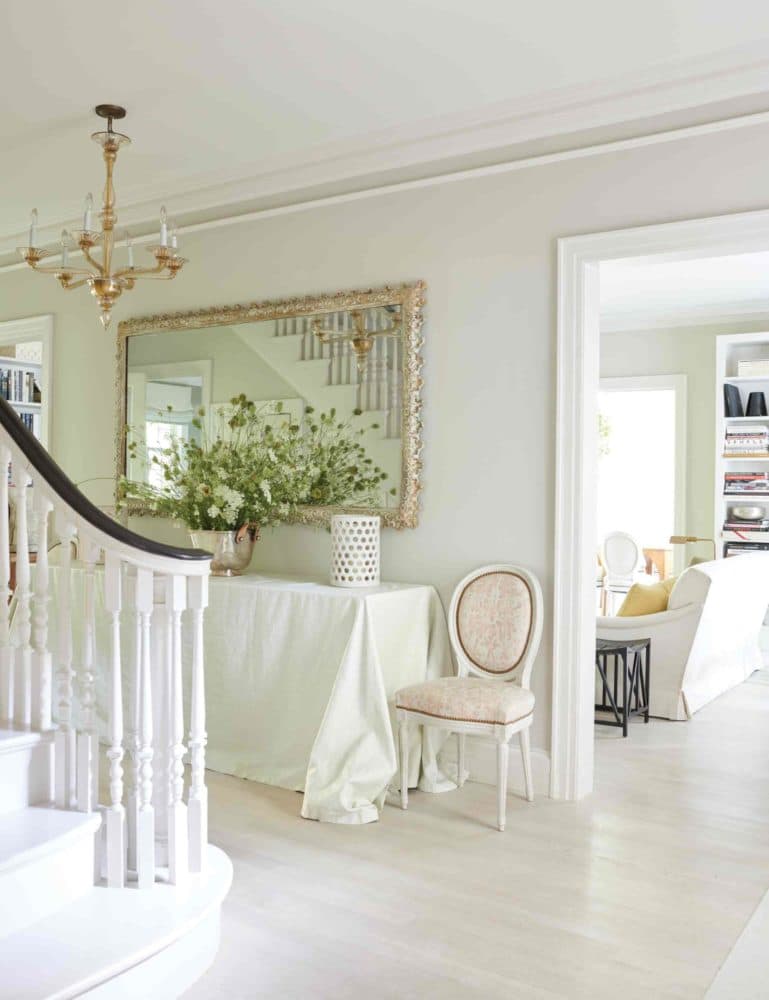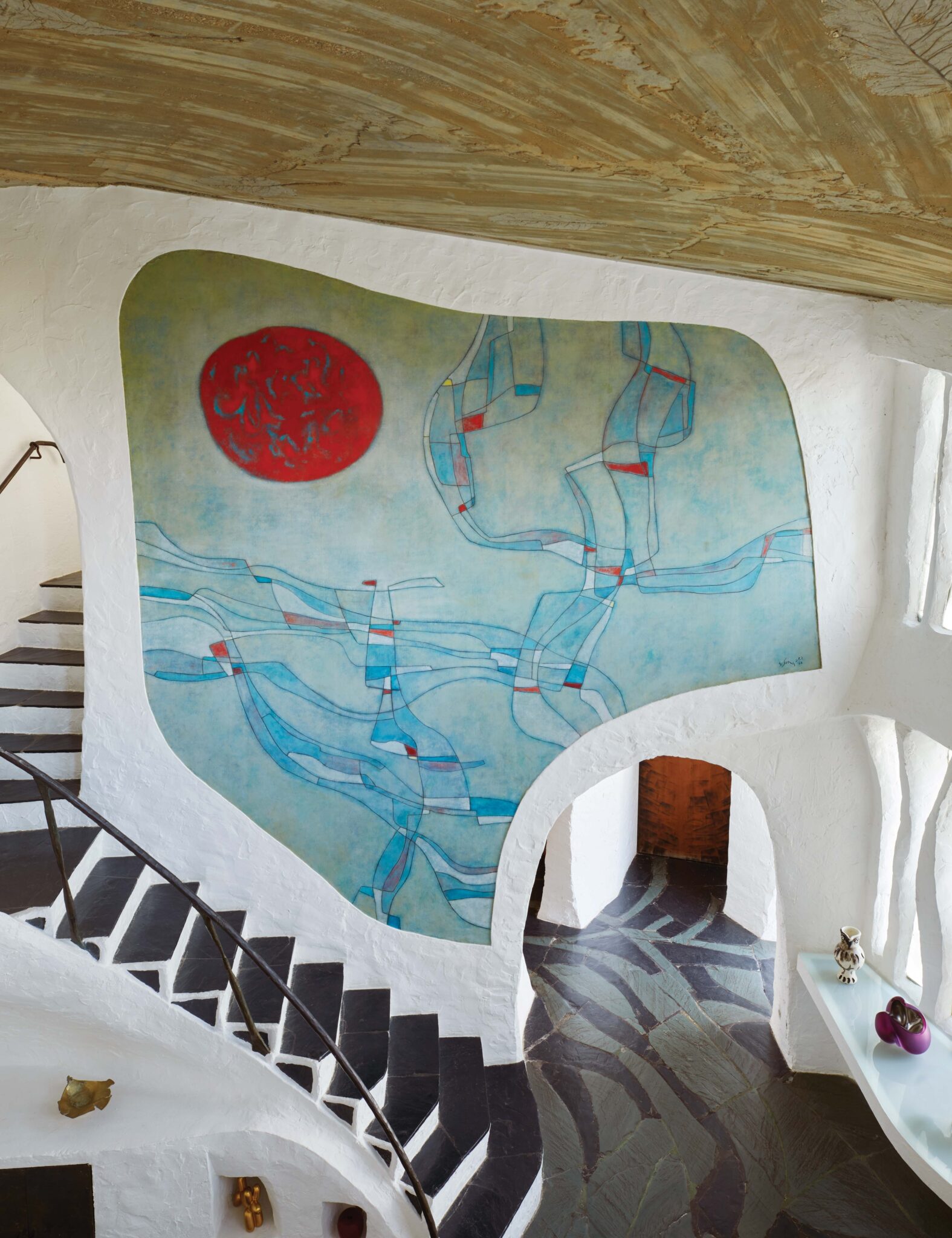
We should start with the elephant in the room. Dara Caponigro, erstwhile shelter magazine editor, author, and creative director of one of the last independent American design houses (that would be Schumacher) lives not in a bedazzled, betasseled extravaganza of a house swimming in pattern and props. The insiders’ insider’s home base is notable not for its excessiveness, but for an under-the-radar sophistication of interiors that reveals the careful eye of a connoisseur.

“As a creative director you’re always exploring the next thing and you fall in love with so much of it,” says Caponigro. “You introduce a new piece or a pattern and you’re like, I’ve got to have that.” But a consequence of a professional life with a finger on the pulse of the design world is that, well, your finger is on the pulse of the design world. The been-there-done-that filter through which you evaluate everything is the very skill that keeps you from bringing all the fireworks home. “This house is an escape. It’s filled with stuff I don’t get sick of.”
Which means that whatever has made it into the 1920s Georgian in the Fieldston section of the Bronx, in New York, has got to be good. The house’s well-proportioned spaces, cloaked in barely-there hues of clouds and sand and fog, are filled with vetted furnishings that were patiently pursued by a top-shelf arbiter. “If you’re picky and can’t justify spending gobs of money, you have to wait. But I like the wait. You appreciate things more if you have to be thoughtful about acquiring them,” she says. Caponigro is an habitué of flea markets, off-the-beaten-path antiques stores and online markets, one who plays the long game to achieve alchemy.
In the living room, Caponigro, an avowed modernist, chose traditional fluted curtain rods with highly decorative finials to visually anchor a light-as-air color scheme. To give the linen curtains subtle interest, she lined the leading edges in a caterpillar fringe, a favorite of Syrie Maugham. Curtains in Schumacher Lismore Linen Plain trimmed with Tuft Braid Tape by Neisha Crosland for Schumacher. Alain Delon for Maison Jansen chairs and Guy Lefevre desk, both mid-century French.Max Kim-Bee
The palette in the family room was inspired by an early 20th-century
French landscape painting that hangs there and perfectly balances cool and warm neutral tones. Sofa upholstered in Piet Performance Linen in Smoke with pillows in Venetian Silk Velvet in Mink, Kudu Stripe and Dazzle Ship Velvet by Johnson Hartig of Libertine for Schumacher, all from Schumacher. Husk chairs by Patricia Urquiola, B&B Italia, bebitalia.com; Raffles Table Lamp by Rose Tarlow Melrose House, rosetarlow.com. Wood and object assemblage by Philip Naudé. Max Kim-Bee

Thomas O’Brien helped Caponigro solve the problem of an asymmetrically positioned ceiling socket with an asymmetrical Serge Mouille pendant, making perfect alignment a moot point. Whitewashed floors reflect the light and counterintuitively are easier to keep clean because they hide dust and dirt. Luna andirons by Marie Suri. Sofa in Everett Performance Twill, velvet pillows in Gainsborough Velvet, both Schumacher.Max Kim-Bee
Take the solarium, where a Noguchi paper lantern hangs from the ceiling above a T.H. Robsjohn-Gibbings table paired with pale Louis XVI-style dining chairs and concrete pavers in a classic (but just slightly faded) checkerboard pattern. In the living room, slope-arm sofas mingle with a Jacques Adnet fireplace screen Caponigro scored at Clignancourt, a Serge Mouille pendant, Lucite obelisks, and a mid-century, travertine-topped cocktail table that probably began its life in some Brutalist office building and never could have imagined its current, whisper-soft reincarnation.

Caponigro swears that the easiest way to incorporate a modern touch into any room, no matter the style, is through lighting, aptly illustrated by a Noguchi lantern—which Thomas O’Brien helped her pick out years ago and has traveled with her from place to place—that’s the focal point of the solarium. Vintage Louis XVI chairs in Berrydown by Veere Grenney for Schumacher. Mid-century dining table by T. H. Robsjohn-Gibbings; Chelsea Mirror, Formations.Max Kim-Bee
Caponigro found the Murano glass chandelier on a trip to Naples 25 years ago and had the dealer ship it home; it arrived miraculously intact despite the fact that it was packed by itself in a box with nary a Styrofoam peanut or scrap of bubble wrap in sight. Luminaire Cirque Hurricanes, Formations.Max Kim-Bee
The house, designed by architect Dwight James Baum, is in a landmarked section of the Bronx. Max Kim-Bee
“Having boundaries is liberating,” says Caponigro. “Designers often say the best jobs are the ones with limited budgets because it makes them more creative.” Similarly, for Caponigro, every object in her home earns its keep, whether functionally or emotionally. “They have to have meaning, remind me of a place or person or an experience.” Those Lucite obelisks were salvaged from her parents ’70s-era living room. In the family room, a Warren Plattner chair is a hand-me-down from one of her mom’s decorating clients (design runs in the blood). “I have a rule that I have to like the person behind any object I bring into my home, because when you see it, you think of that person—they enter your psyche, and why not surround yourself with positive vibes?”

Throughout the house, Caponigro channeled an English aesthetic in keeping with the Georgian-style architecture but reinterpreted it for her more modern sensibility. In the kitchen, she was inspired by old-fashioned sculleries but distilled the look with a pared-down treatment.Max Kim-Bee
Dining table and chairs by Jasper Morrison for Cappellini. Titan ceiling pendants, Original BTC.Max Kim-Bee
With the addition of graphic wallpaper, custom peg rails with a Bauhaus profile and a 1905 Josef Hoffman chair, a formerly “nothing” space became an elevated point of entry. Walls in Asolo wallpaper by David Oliver for Schumacher. Max Kim-Bee
Caponigro isn’t above turning to friends for help when she’s stumped and it helps that those friends happen to be the foremost practitioners in the design field. “Veere Grenney helped me pick the sofas and figure out the dimensions and layout of the bookcases, and suggested the paneled mirror in the living room, while Thomas O’Brien was brilliant in helping me solve issues with the kitchen floor plan.” Caponigro favors neutrals and for her paint plan enlisted the help of her like-minded friend, David Oliver, founder of the Paint & Paper Library. Also in her brain trust were David Kaihoi, Richard Hallberg and Timothy Whealon—not to mention the hundreds of interiors by the likes of Redd, Hadley, Braithwaite and Buatta she’s bustled through in the course of a rich career. “Thank God for that exposure and my friends.”

To create more storage in the main bedroom, Caponigro added a wall of built-in, period-perfect cupboards that feel like they’ve been there forever. The off-the-shelf, black-and-gold finish on the Michael Taylor four-poster was “too fancy” for Caponigro, so she painted it a creamy shade of white and it now reads as a ghostly silhouette. Caponigro also painted Circa Lighting’s Claymore ceiling fixture white. Bedside tables designed by Sandra Nunnerley; Hadley table lamps by Christopher Spitzmiller. Matouk Luca Hemstitch bedding. Early 19th-century Swedish chair and headboard upholstered in Betty Chintz, curtains in Kiosk print, both fabrics by Veere Grenney for Schumacher. Pair of George III side chairs in The Wave cut velvet by Miles Redd for Schumacher. Minna wool carpet from Patterson Flynn Martin.Max Kim-Bee




























